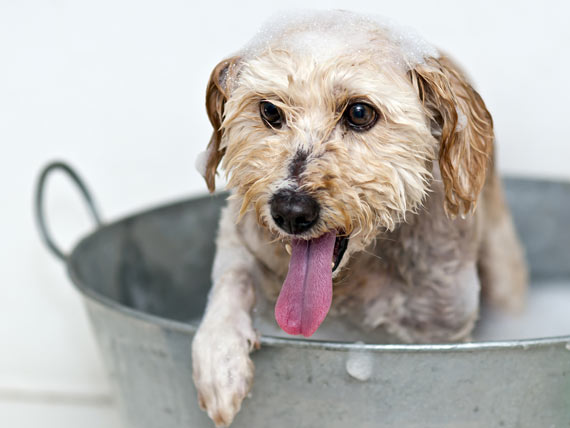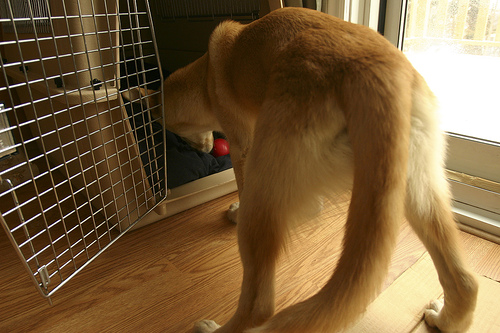

Herbs and essential oils have been used to repel insects since the dawn of man, merely upon the suggestion that they work. But how exactly do these natural compounds keep pesky critters off your pet?
Any discussion of natural flea and tick repellants requires a warning that many of these substances, despite being natural, can be toxic if ingested by your pet. The safest way to use herbs and oils is to put them on a collar, which is hard to reach during doggy and kitty self-cleaning sessions. Even a small amount of some, consumed orally, can cause liver damage and serious neurological symptoms.
Essential oils that contain phenols are particularly toxic to cats and cause liver damage. These include oregano, thyme, eucalyptus, clove, cinnamon, bay leaf, parsley, and savory. It’s a good idea not to share any food containing these herbs and spices with your pets.
Ketones in essential oils can cause neurological symptoms if ingested. Some herbs and essential oils with this component include cedar leaf, sage, hyssop, Cyprus, lavender, eucalyptus, mint, caraway, citronella, clove, ginger, chamomile, thyme, and rosemary. Once again, keep your pet out of a kitchen using these ingredients and don’t allow any sampling of dishes with these herbs and spices.
Companies offering natural flea and tick repellants, as well as remedies for infestations, are well aware of which compounds are problematic for your beloved pets. Be diligent, though, in reviewing the ingredients list for yourself. Careful pet owners can prevent any harm while still reaping the benefits of essential oils and herbs to help keep cats and dogs flea and tick free.
Shampoos - Some natural flea and tick shampoos do contain potentially toxic ingredients, but the short amount of time in contact with the skin doesn’t allow for much absorption. Problems may evolve if your pet soaks in it for any longer than a normal sudsing up. A thorough rinse is of utmost importance, as well as vigilance against Fluffy or Fido trying to sneak of taste of it.
Dips - Dips with these ingredients are not recommended, despite any manufacturer’s claims of safety. The very nature of a flea and tick dip requires thorough dousing and soaking, which promotes maximum absorption of ingredients through the skin. Steer clear of these to keep your pet out of danger.
Collars - Flea and tick collars containing these ingredients should only be coated on the outside of the collar to keep the compounds out of direct contact with your pet’s skin. When considering a purchase of this form of protection, contact the manufacturer and ask if the collar is coated on the inside and if so, consider making your own collar using the oils only on the outside. Make sure it’s close-fitting enough to prevent your pet from licking it and if you have multiple pets that may lick each other’s collars, then this method is not the way to go.
Only therapeutic grade essential oils should be used for repelling ticks and fleas. Any other form can contain ingredients that are harmful to your pet.
Geranium – It’s difficult to imagine that any creature would despise the lovely scent of geranium, but fortunately, ticks hate it (there is no documentation as to how it might affect fleas).The bonus is that your dog and cat will smell marvelous as well as be tick-free. This sweet-smelling oil is non-toxic to your pet and can be rubbed into the fur and skin without harmful effects, as long as you dilute it with vegetable oil. A good ratio is 10 to 25 drops geranium essential oil combined with 2 tablespoons of olive oil, for instance. Applying the oil “neat,” which means undiluted, can irritate your pet’s sensitive skin.
Peppermint – This oil works differently from the other two, in that the smell isn’t what repels fleas and ticks. Peppermint is actually a sort of torture device for pests, especially satisfying if you’re very angry at what they’re doing to your beloved pet. It is one of the most effective octopamine (insect’s version of adrenaline) blockers in existence, causing the parasites’ central nervous system to break down. Their heart rate, movement, behavior, and metabolism are hindered to the point of death. Meanwhile, Fluffy and Fido will smell like a peppermint stick and be totally unharmed.
Citronella – IMPORTANT: Citronella should not touch your pet’s skin and fur nor be ingested, but it can be used as an environmental deterrent. As many a citronella candle-burning Southerner will tell you, mosquitoes stay away from this scent. Natural pet care companies have put two and two together to discover that this essential oil also repels (not kills) other pests, namely fleas and ticks. While it’s hard to imagine these parasites with noses, apparently they do actually smell and can’t detect the scent of their favorite meal – namely, Fluffy and Fido – when the aroma of citronella fills the air. If your pet spends time confined in your back yard, consider circling the perimeter with citronella torches to create a wall of protection between pests and your pet
With this arsenal of oils, or products containing them without any harmful added ingredients, your pet will be the best-smelling animal in the neighborhood as well as be tick and flea free.
How Natural Flea and Tick Repellants Work originally appeared on Pet360.com
Image by: Tio Perchas / via Shutterstock
 How Can You Tell Your Pet is Overweight?
Is My Pet Fat?
By Amanda Baltazar
H
How Can You Tell Your Pet is Overweight?
Is My Pet Fat?
By Amanda Baltazar
H
 Canine Positive Portable Kennel Training
This article is courtesy of The Hannah Society.
&
Canine Positive Portable Kennel Training
This article is courtesy of The Hannah Society.
&
 Four-Legged Heroes: Dangers for Search-and-Rescue Dogs
This article is courtesy of Mesothelioma.com.
Ofte
Four-Legged Heroes: Dangers for Search-and-Rescue Dogs
This article is courtesy of Mesothelioma.com.
Ofte
 10 Things You Should Know Before Getting a Dog
Have you been dreaming of getting a dog ever since
10 Things You Should Know Before Getting a Dog
Have you been dreaming of getting a dog ever since
 Heartworm Disease in Dogs
Heartworms in Dogs
By T. J. Dunn, Jr., DVM
Heartworm Disease in Dogs
Heartworms in Dogs
By T. J. Dunn, Jr., DVM
Copyright © 2005-2016 Pet Information All Rights Reserved
Contact us: www162date@outlook.com